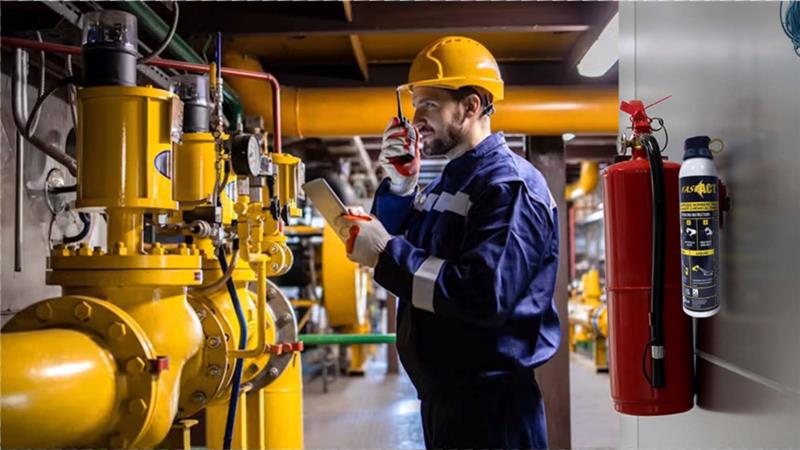When Seconds Matter: Lessons in Chemical Incident Preparedness from the Tennessee Explosion
Chemical Incident Overview: The Tennessee Explosion and CSB Investigation
The U.S. Chemical Safety Board (CSB) has opened an investigation into the fatal explosion at Accurate Energetic Systems, LLC (AES) in McEwen, Tennessee, that occurred on October 10, 2025. According to the Bureau of Alcohol, Tobacco, Firearms and Explosives (ATF), between 24,000 and 28,000 pounds of explosive material detonated, destroying parts of the industrial chemical facility, killing 16 workers, and injuring others.
Initial findings indicate the explosion began in a section where explosive materials were being heated in production kettles, triggering a secondary detonation in nearby storage areas. The CSB will review site operations, management systems, and chemical safety procedures to determine root causes and issue recommendations.
While the investigation continues, the scale and speed of this event remind chemical facilities and emergency planners that even with strict safety controls, hazardous chemicals and chemical agents pose unpredictable risks once released, highlighting the importance of chemical incident preparedness and emergency planning.
What the Tennessee Explosion Reveals About Chemical Hazard Mitigation
Chemical and energetic materials can create large-scale hazards in seconds. Once vapor, dust, or reactive material escapes containment, the resulting chain reaction is difficult to control.
Incidents like the AES explosion highlight several critical realities:
- Even experienced facilities face unpredictable chain reactions during heating, mixing, or transfer operations, particularly with water-reactive chemicals or other highly toxic chemicals.
- Secondary hazards—chemical release, vapor dissemination, particulate spread, and contamination—can persist long after the primary event, putting responders and nearby personnel at risk.
- Mass-casualty chemical incidents require rapid chemical incident response to limit exposure and secure the surrounding area.
Preparedness does not eliminate all risk, but it defines how effectively an organization, and its emergency management office can respond when an incident occurs.
Building Stronger Chemical Incident Preparedness and Emergency Response Plans
Effective chemical incident preparedness starts long before an accident happens. Facilities that handle or store hazardous materials must maintain tools, training, and personal protective equipment (PPE) for immediate response. Rapid containment and neutralization reduce both the scale of exposure and the time required to return operations to safety.
Key elements of readiness include:
- Accessible chemical neutralization solutions, vapor suppression, and decontamination procedures.
- Incident response planning with pre-defined shelter rooms, emergency supply kits, and medical supplies on hand.
- Cross-training in hazardous material handling, personal protection equipment, and mass decontamination for responders and facility personnel.
- Clear decontamination instructions for responders and affected areas, including hospital-based decontamination resources for chemical exposure incidents.
Preparedness is not just a regulatory checkbox—it’s an operational safeguard that determines how quickly a chemical exposure incident can be mitigated in chemical facilities and surrounding environments.

FAST-ACT Neutralization Solutions for Chemical Emergency Response
FAST-ACT provides field-tested chemical neutralization solutions designed to control both vapor and liquid chemical spills during emergencies.
For vapor releases, FAST-ACT offers pressurized cylinders available in 400g, 1kg, 2kg, and 4kg sizes. These cylinders disperse FAST-ACT’s proprietary neutralizing formulation directly into the air or onto surfaces or skin, quickly reducing toxic chemical vapors and other hazardous chemicals. Their scalability makes them ideal for decontamination procedures, hot zones, and industrial chemical facility incidents.
For liquid and particulate chemical spills, FAST-ACT provides the FAST-ACT Bulk Pail and the FAST-ACT Shaker Bottle. The Shaker Bottle is ideal for targeted applications on small chemical spills or leaks, while the Bulk Pail covers larger contamination zones. Both solutions neutralize chemical agents and hazardous materials on contact, helping responders minimize exposure and easy disposal.
These dry, ready-to-use chemical neutralization solutions integrate seamlessly into decontamination corridors, mass decontamination operations, and broader chemical incident response plans. Designed for rapid deployment, they require no mixing or activation—ensuring responders can act immediately during a hazardous materials release. Together, they form a complete, field-ready toolkit for managing both vapor and chemical threats, protecting personnel, property, and the environment during chemical accidents and emergency events.
FAST-ACT technologies are deployed globally across defense, hazmat, and industrial response units, providing proven tools for building chemical safety and rapid neutralization when every second matters.
Why Chemical Incident Preparedness Matters More Than Ever
The Tennessee explosion serves as a powerful reminder that chemical incident preparedness saves time, lives, and resources. Chemical hazards and toxic chemicals demand both respect and readiness—because once an incident begins, the response window is measured in seconds.
FAST-ACT remains committed to supporting responders and safety professionals with reliable, fast-acting chemical neutralization solutions for hazardous materials, helping mitigate chemical exposure incidents, mass-casualty chemical incidents, and other emergency situations where containment and response speed are critical.

Be ready before a chemical incident occurs. Explore FAST-ACT’s complete line of neutralization solutions—including pressurized cylinders, bulk pails, and shaker bottles—to enhance your chemical incident preparedness and emergency response capabilities.
About Timilon Corporation:
Timilon Corporation is the manufacturer of FAST-ACT®, a proprietary formulation of non-toxic high-performance specialty materials effective at neutralizing a wide range of toxic chemicals with the added capability to destroy chemical warfare agents. The FAST-ACT technology is utilized by leading defense agencies, chemical industrial companies, first responders and HAZMAT teams to quickly and safely eliminate chemical hazards. For more information, reach out to Leticia Menzzano, Marketing Manager, lmenzzano@timilon.com.

